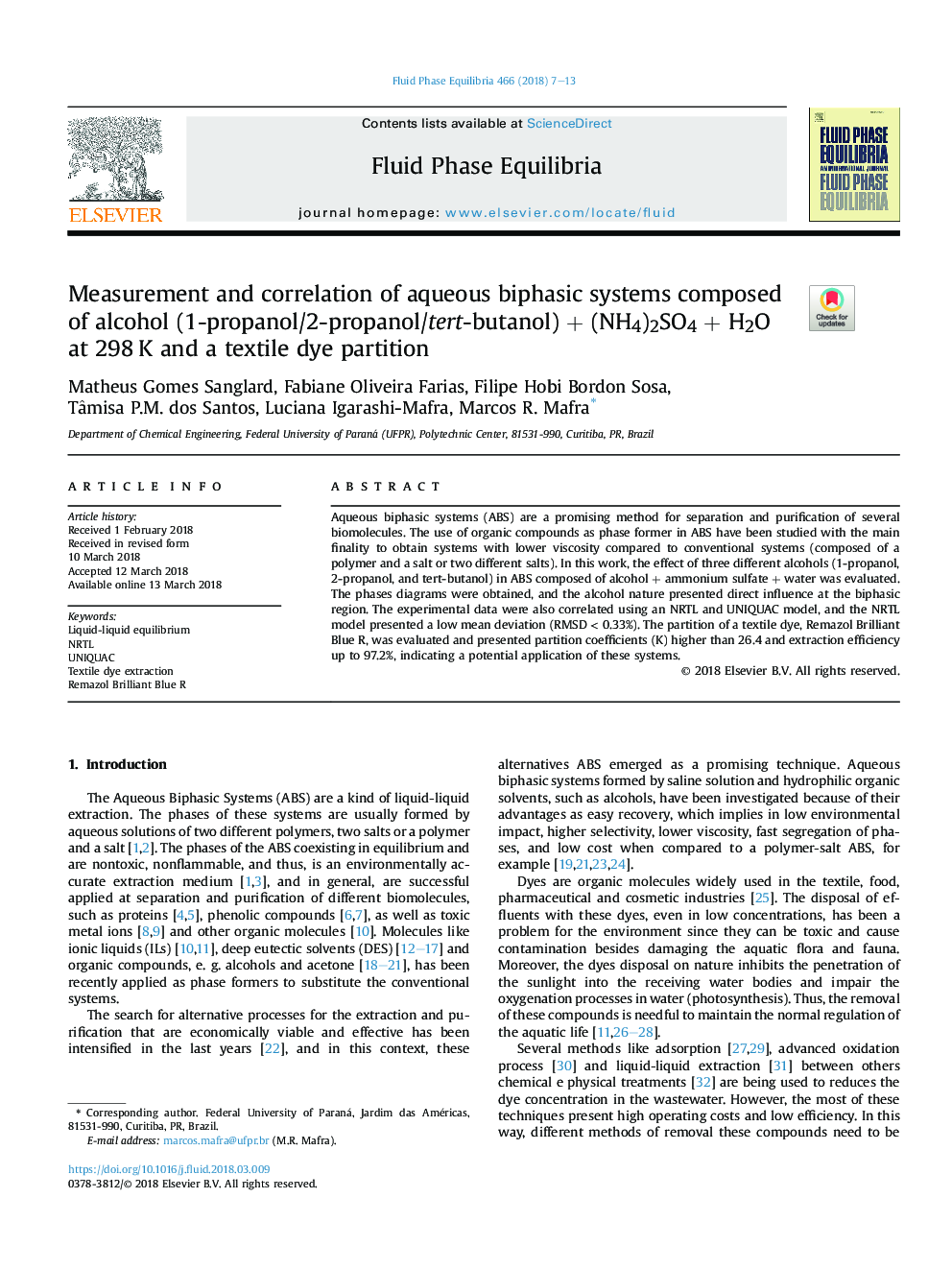| Article ID | Journal | Published Year | Pages | File Type |
|---|---|---|---|---|
| 6619185 | Fluid Phase Equilibria | 2018 | 7 Pages |
Abstract
Aqueous biphasic systems (ABS) are a promising method for separation and purification of several biomolecules. The use of organic compounds as phase former in ABS have been studied with the main finality to obtain systems with lower viscosity compared to conventional systems (composed of a polymer and a salt or two different salts). In this work, the effect of three different alcohols (1-propanol, 2-propanol, and tert-butanol) in ABS composed of alcohol + ammonium sulfate + water was evaluated. The phases diagrams were obtained, and the alcohol nature presented direct influence at the biphasic region. The experimental data were also correlated using an NRTL and UNIQUAC model, and the NRTL model presented a low mean deviation (RMSD < 0.33%). The partition of a textile dye, Remazol Brilliant Blue R, was evaluated and presented partition coefficients (K) higher than 26.4 and extraction efficiency up to 97.2%, indicating a potential application of these systems.
Related Topics
Physical Sciences and Engineering
Chemical Engineering
Chemical Engineering (General)
Authors
Matheus Gomes Sanglard, Fabiane Oliveira Farias, Filipe Hobi Bordon Sosa, Tâmisa P.M. dos Santos, Luciana Igarashi-Mafra, Marcos R. Mafra,
